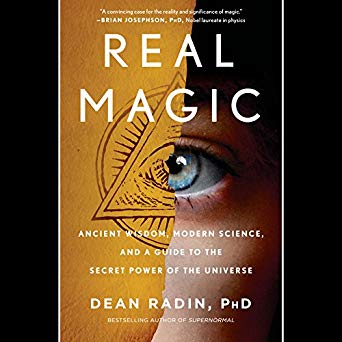This is a true story about a non-haunted house that Loyd Auerbach discusses in his Field Investigations class through the Rhine Research Foundation (which I highly recommend).
Loyd was called in to investigate a home where the residents claimed several anomalous experiences occurred.
“It was a family of four, and after they moved in they started seeing these shadows out of the corner of their eyes. They would get terrible headaches and feel dizzy in this one particular room. They smelled a noxious odor, and occasionally they’d see bursts of flame that actually left marks on the walls.”
Since the occupants were renting and had a long-term lease, they wanted help either to get out of the lease or to have the homeowner fix these problems. Many people might jump to conclusions of hauntings, apparitions, or even poltergeist phenomena but Loyd prefers to find the truth whether it’s due to mundane causes or not. This is what his field investigation unearthed:
- The house was built on a bad foundation causing the angles in the rooms of the home to be off from 90°. This can make a room feel odd and cause doors to open or close on their own.
- There were high tension towers very nearby causing a low-frequency hum which can cause anxiety.
- The type of insulation in the walls was creating static electricity in the family room where they had many electronic devices creating the ball-shaped energies.
- It was built on or near a solid waste dump and the chemical emanations were causing health issues and flames in the family room.
In his Field Investigation class, Loyd discusses the mundane effects that resemble the paranormal. Radios from passing vehicles or a pedestrian on a dog walk talking on a cell phone can sound like disembodied voices. Knocks and groans can be caused by temperature differentials in building materials or from water sluicing through pipes. Hallucinations can be caused, not just by low-frequency sounds, but many types of prescribed medications. Once the mundane answer is eliminated then one may question what is causing the phenomena. Unfortunately, not too many “ghost hunters” are familiar with structural or sound engineering, the electromagnetic spectrum, or the hallucinatory effects of drugs. If you take his course, there are a couple of books he recommends that have really great recommendations for what devices to use and how to use them properly in an investigation.
Because I love a mystery, I would occasionally watch “Fact or Faked: Paranormal Files” on T.V. while doing something creative with my hands. It’s a reality show with a team of very young investigators, led by an ex-FBI agent, each having experience with making special effects on film or a passing knowledge of some related skill. Think of it as “Mythbusters” for the paranormal crowd. They would come together in a living room/office environment and discuss some interesting paranormal video that had been submitted or that they had found on YouTube. The idea was to go on location where the video had been shot and determine if they could fake the effect from the video themselves. If so, they debunked the paranormal explanation as a case of mistaken identity.
It’s frighteningly easy these days to fake a ghost in a picture — there’s even an app for it — but one of the other artifacts frequently mistaken for “ghost orbs” is caused by the relationship between light and the camera lens. Even if you are present in the room and you photograph a dark corner swearing on whatever holy book you hold dear that there was no orb of light there, the camera might just make you a liar, but it isn’t a ghost, it’s just physics.
The most common mistaken U.F.O. sightings are the stationary formation of red orbs in a dark sky. The first question you should ask is whether you’re near a military base or a location where they perform maneuvers. If so, it’s probably flares. Helicopters and airplanes seen from a particular point of view can fool a viewer as well. Believe it or not, there really is something called swamp gas that can light up a muggy Louisiana roadway. In a “Fact or Faked” episode, it was evident that some weird meteorological phenomenon was behaving like a movie screen between the peaks of two distant mountains showing the rear lights of passing cars instead of the latest blockbuster. My main requirements for calling a U.F.O. is if it defies physics and doesn’t look like a photographic hoax or remnant on a video.
As William of Occam put it in so many words, given a choice between two explanations of an effect, you choose the simplest, most likely one. That being said, if you eliminate the impossible, that which remains, however implausible, must be true.

